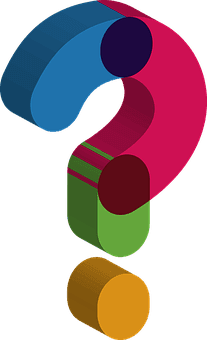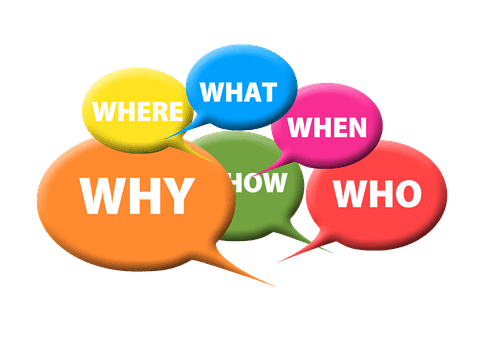Rough translation “The Logic of the mind“
We ALL have TWO sets of thinkers in our makeup. If that are not true then how is it we can DO something yet think about something else. For example you do not walk down the street and see a £20 note on the pavement and have to stop to pick it up. No the shrewd among us continue walking AND pick up the £20 note to avoid the suspicions of those around us. ONE JOB does not get interrupted by another task coming into mind. One of our minds is like a computer, it stores and retrieves information. It starts ‘leaning’ about the world as soon as we are born. By the age of seven years old this mind has enough information to be the rudder that steers us through life. It has learned that fire burns, ice burns to AND that doing wrong things gets punishment & and that doing right things brings rewards. It learns all this stuff by carefully observing others. It chooses role models and says I am going to be like them. THIS MIND IS CALLED THE SUBCONCIOUS MIND and ticks along all day without us being too aware of what the little beggar is up to. Now, this is ALL GOOD, except as we get older to listen more and more to what other people tell us. AND surprise, surprise, not everything we are told is FACT {it encompasses things like prediction, analysis, beliefs, pig-headedness, ignorance, fear, love, trauma – and all the other stuff of life}. NOW the subconscious mid is far from stupid! He is a clever little beggar and he tries to make sense of all these bits of information. He works on a ‘close fit’ system and allows a few holes here and there which he becomes a ‘seeker’ of to complete his jig-saw puzzle. THIS is the grass roots of intellectual thinking. He sits, he thinks, he studies, looks for answers. If he gets a real problem with his “close fit” and cannot find a satisfactory answer to support his understanding of LIFE then he will let you know. Things begin to “FEEL” not quite right, left unchecked that feeling gets ever stronger as he want US to solve his conundrum for him. WE CALL THIS FEELING ANXIETY. SO far, so good! Now THE CONSCIOUS MIND thinks differently. He is our observer of what is going on RIGHT NOW, this moment. He has a thing called intuition & another thing called intent and when his counterpart is struggling to UNDERSTAND something this guy always knows the answer, always. It’s just we fail to listen to him. In our average day we spend 90 per cent on our auto-pilot subconscious and 10 percent on our conscious mind. WE BELIEVE WE GOT IT ALL SUSSED but we don’t otherwise anxiety would not exist. How many times have you wressled with a big problem all day, slept on it and in the morning the solution is Chrystal clear?? You solved it by INTUITION and INTENT rather than deep analysis. You changed your thinking mode from ANALYTICAL to LOGICAL. It will take a while fr all of th above to ‘sink in’. It took me a little over a year BUT when the penny drops the mind uncluttered itself {as if by magic} and you become clear thinking.
Here are some Sydney Banks 3 Principles terms for you to work with, just think about how you UNDERSTAND the terms. Go by logical ‘feel about them’ rather than analytical ‘know about them.
- WHAT IS
- WHAT IS NOT
- MIND
- THOUGHT
- CONSCIOUSNESS
- The Moment
You might like to look at The Little Book of Clarity by Jamie Smart as a starter for ten before you look at the words and wisdom of the late Sydney Banks who had no professional qualifications in the working of the human mind BUT turned the psychiatry world upside down with this teachings.
‘Psychology is the scientific study of the human mind and the reasons for people’s behaviour.‘
Personality is defined by the patterns of thoughts, feelings and behaviour which influence our expectations, values, how we see ourselves – and how we react to other people, problems, pleasure and pain. So where do psychology and writing meet? How can we apply it to the creation of a credible character?
Everyone is the hero in their own story. In psychology this is called the ‘personal fable fallacy’‐ a form of”‘cognitive distortion”which makes each us believe that
- we are the object of everyone’s attention/ concern
- we are unique
- we are invulnerable
In other words, everyone else will understand our motivations and behaviours and nothing bad will happen. Despite our experiences, we apparently hold on to these beliefs throughout most of our lives – as, no doubt, do our fictional characters, as they are, after all, our own constructs.
Stories generally have a protagonist, antagonist (and at least one secondary character), each with a complex personality;
Protagonist ‐ the hero of your story and their own. Fundamentally ‘good’ but somewhat flawed for interest’s sake. Ultimately we empathise with their view of the world.
Antagonist ‐ fundamentally “not so good’, and obviously flawed: the hero of their own story but no-one else’s. In other words, we may empathise with them up to a point but their view of the world remains flawed and we don’t share it.»
Psychological analysis of flaws is useful in building your characters. For example, suppose your antagonist is a sociopath. This flaw offers interesting depths (and plot opportunities) to the character, who is – not negatively affected by emotional situations (potential advantage – cannot connect or make meaningful relationships (potential disadvantage)
‘Writers are keen observers of human nature and they capture it in their characters and storytelling. They show the behaviour, thought processes, and the way people make meaning o u t of their experiences and events, and then turn them into provoking entertainment. (Darian Smith)
Knowing your character‘s personality type, the way they might react to big or small events ‐ helps to nail one of the ‘pillars’ of your story ‐ characterisation. To filter the story through your character‘s perceptions, you need the broad brushstrokes (extrovert/ introvert/ desire/talent) and the small details that make them real and unforgettable.
Good writers ‘people watch“ in order to create relate-able characters, fundamentally recognisable. Actions, speech, interactions – and body language. “The most common mistake is to use body language to tell us what we already know. it should tell us what we don ‘t know.‘ (Lisa Cron)
We are all different and yet in many ways the same. When we read, we attach to characters on various levels to learn what they can teach us. The effect of connecting with a character who is experiencing something we recognise can last long after finishing the last page of the story….
METHOD #1: TWENTY QUESTIONS
These take the getting‐to-know-the-characters interview just a step beyond the usual “Tell me your name, birthplace,job, parents, etc.”
- if you had a free day with no responsibilities and y o u r only mission was to enjoy yourself, what would you do?
- What impression do you make on people when they first meet you? How about after they’ve known you for awhile?
- What’s your idea of a good marriage? Do you think that‘ll happen in your life?
- What are you most proud of about your life ? ( if they answer with something other than a personal statement, like a business achievement, ask “What about on a personal level?”)
- What are you most ashamed of in your life? (Again, if necessary ask “What about on a personal level?”)
- if you could spend the day with someone you admire (living or dead or imaginary), who would you pick?
- Do you think you‘ve turned out the way your parents expected?
- What do you believe about God? (lf they believe in God,ask“What do you suppose God thinks of you?”)
- Is there anything you’ve always wanted to do but haven’t done?What would happen if you did it?
- What’s the worst thing that’s happened in your life? What did you learn from it?
- Tell me about your best friend. (lf you think it might be interesting, ask“How did you meet? What do you like about this person? What do they like about you?)
- What’s the worst thing you’ve ever done to someone? Why? (“Why” is usually a good followup question to any response!)
- What would you like it to say on your tombstone?
- Describe your ideal mate.
- What are you most afraid of?
- What’s the most important thing in your life? What do you value most?
- What do you like best about yourself? Least?
- What do you like best about [the other character]? Least?
- How do you feel about your life right now? What if anything,would you like to change?
- Are you lying to yourself about something? What lS it?

METHOD #2: BASlC inventory
- Character’s name:
- Personal history (parents,siblings, history,backstory)
- Physical appearance (age,looks,clothing):Personality (pros & cons):
- Intelligence/education:
- Talents/skills:
- Failings: Characteristics (verbal expressions, habits when stressed, objects carried):

